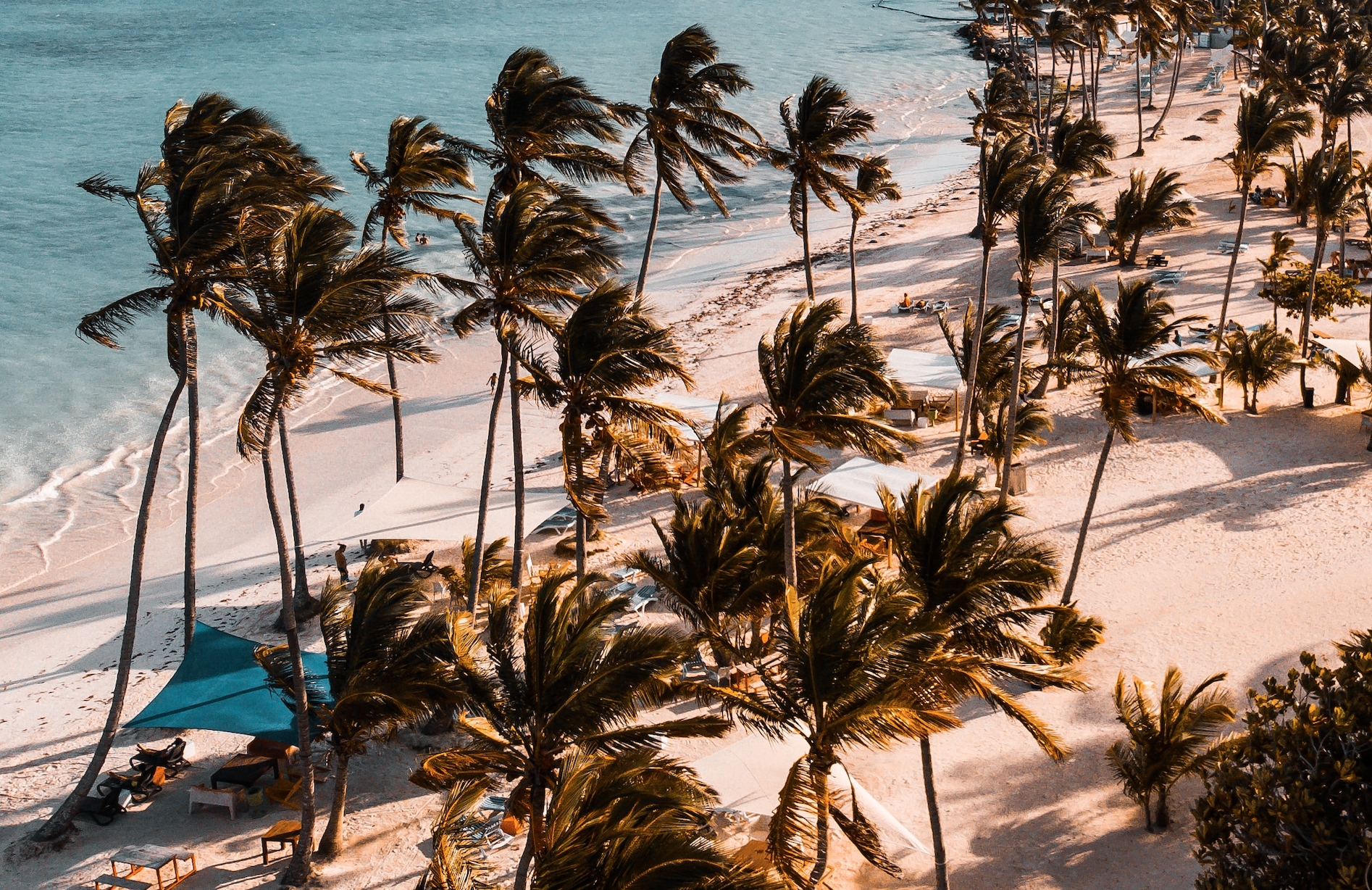
Over the past few months, a spate of mysterious tourist deaths in the Dominican Republic has taken hold of the American consciousness. 12 eerily similar deaths in a year, with victims showing signs of possible poisoning? It was enough to make any sane person worry. Outlets (including UPROXX) tried to parse what caused the deaths, what it could mean for American tourism in the Dominican Republic, and what it could mean for international travel at large. Commenters wondered aloud: Is it safe to go to the Dominican Republic anymore? Should I cancel my trip? Where is safe to go?
Plenty of people were willing to write off the Dominican as dangerous, to cancel their trips and claim that you’d be a fool to risk it.
“Anybody that goes to DR in light of these incidents & the thousands of other places to go, rethink your plans. Your life may depend on it,” one Facebook response to our initial article read.
Another commenter wondered if a conspiracy was afoot: “Do you hear about the hotel staff dying? No! That shows you that something is wrong somebody is poisoning American guests and the Dominican government is covering up the wrong doings by embalming the bodies before shipping back to the states.”
Of course, a degree of worry is understandable, especially given the amount of coverage these deaths have garnered. But the collective reaction to this story raises the question: should you really be afraid of the DR? Is it any more dangerous than any other popular tourist destination, or is this fear just a matter of confirmation bias?
What does the data really show?
Americans are traveling more than ever before. In 2018, Americans made 93,038,257 trips outside of our borders, a 6.3 percent increase over 2017, according to the International Trade Administration. We’re visiting Mexico the most, followed by the European continent, Canada, and the Caribbean. In fact, we’re breaking records (and isolationist stereotypes) by leaving the country so much.
This may very well be why the news out of the DR terrifies people. After all, it’s not like we hear about Americans dying abroad elsewhere — at least not at such an alarming rate, right? There must be something seriously wrong.
Well, not exactly. According to the State Department’s data on U.S. Citizen Deaths Overseas, thousands of Americans have died while abroad every year. In fact, over a 10-year period from January 2009 to December 2018, 284 people died in Costa Rica, a country that has a reputation for being safe and welcoming to foreigners. Compare that to 208 deaths in the Dominican Republic in the same time period — and the fact that the Dominican receives far more American visitors year-over-year than Costa Rica — and already the idea that the Dominican is more dangerous than other locations becomes flimsy.
In fact, let’s take a look at Europe. The continent is one of the most popular destinations for Americans traveling overseas, and you never really hear about the dangers of wandering around Münich or Milan, do you? Maybe you should. In the same 10-year span, 87 Americans died in France, 187 in Germany, and 89 in Italy. And what about our neighbors to the north? 150 Americans died in Canada over the course of 10 years.
France and Germany? Canada? Dangerous? Ha, don’t make us laugh. And yet… here is the proof in the pudding, right? Hundreds of deaths over the past decade, all in what most Americans consider safe countries, the causes ranging from drowning to homicide.
Perhaps we should put the kibosh on leaving the country all together?
That, of course, would be foolish. Almost as foolish as writing off an entire country — which hosts 2.1 million of us each year — for a dozen deaths. After all, with a large enough sample size, you’ll find alarming patterns just about anywhere. And while the similarities between these deaths is worthy of being explored, this also does not mean that the Dominican Republic should be written off as a travel destination.
One truth of travel is that it’s not sunshine and daisies, despite what social media may show. Life continues on, no matter where in the world you may be. And a part of life is death, no matter if you’re at home or on vacation. That means that sometimes people die when they’re abroad, no matter where they are.
It’s the circle of life, fam. It moves us all.
Then why are people so worried about safety in the Dominican Republic?
To answer this question, we can look to a recent New York Times story, “Adventurous. Alone. Attacked.” about women traveling alone. The story opens with an anecdote about a woman who was murdered by the security guard at her Airbnb in Costa Rica, then ponders,
Recent headlines about the deadly violence inflicted on women traveling alone have raised questions about how the world is greeting the documented rise in female solo travelers and about the role of social media in promoting the idea that far-off lands are easily accessible and safe.
This story raises questions about whether or not traveling alone as a woman is safe. In addition to the woman who died in Costa Rica, we also hear about two women murdered in Morocco, a woman attacked and sexually assaulted in Thailand, another in Bolivia. All alone.
These anecdotes would be enough to give anyone pause, especially the way they’re framed: they’re part of a larger pattern of women being attacked while abroad, especially in developing countries, so of course if you’re a woman who wants to visit a developing country on your own, you should rethink that desire. But the framing doesn’t tell you the whole story, which is this: violence against women is a problem, writ large, in the world. The woman who was murdered in Costa Rica by her security guard? She was the third foreign woman to be murdered in Costa Rica in three months, yes, but in a six month period in 2018, 14 women were murdered in gender-based acts of violence in Costa Rica, a persistent-enough pattern that the country declared gender violence a national emergency.
The fact that some of these gender-based violent crimes happen to be committed against foreigners does not a pattern make. And, in fact, the Times even admitted as much, writing that not only is violence against women just as likely to occur “in rich Western nations such as France, Italy and Germany” but that there isn’t actually any statistical evidence to support the idea that solo travel for women is any more dangerous than simply being a woman.
There was an immediate backlash to the piece within the travel community, with plenty of women travelers tweeting about what was wrong with the way the story was reported. To boot, there were numerous rebuttals from outlets like Outside and Vox.
Sadly, the damage was, in a sense, done: people outside of the travel community weren’t exactly privy to the conversation that stemmed from the original article, and the framing — solo travel for women is risky, especially in developing countries — gained steam quickly. As a female travel writer, I received texts from concerned family members. The article was reposted on several subreddits and numerous private Facebook groups for travelers and travel writers, with people questioning whether they should indeed go on that solo trip through southeast Asia or Central America after all, or if they should pick somewhere safer, like western Europe.
What does this have to do with coverage of the recent deaths in the Dominican Republic?

Whether purposeful or not, the framing of what’s going on in the DR has stoked fear about something that is statistically less likely to happen than death by salmonella poisoning or even “contact with a powered lawnmower.”
Why? Both the Dominican story and the Times story suffer from the same Eurocentric framing that has dominated travel for years. These stories were framed by journalists based in the U.S., many of whom (like myself) are white and grew up in the U.S. school system, which teaches a Eurocentric curriculum. Whether purposeful or not, much of American travel writing explores the world through that lens. The outside world is, at the very least, “unknown” and therefore holds an element of danger.
This idea, that developing countries are implicitly more dangerous, fits nicely with the Eurocentric belief that Europe and North America are safer than the Dominican Republic, Bolivia, Thailand, or Morocco. But as you can see from the State Department’s data on U.S. deaths abroad and even from living in the U.S., the way these stories are framed leaves out a lot of information and stokes fears that prevent people from traveling to new places.
So what now?
The fact of the matter is that 2.1 million Americans visit the Dominican every year, making these 12 or so deaths anomalies, no matter how disturbing the similarities. That doesn’t mean to ignore them, there are ways to avoid most anomalies — but the danger isn’t so potent that you should avoid travel altogether. 12 deaths is clearly enough to start a panic, but should you cancel travel plans? Doubtful.
Meanwhile, the onus is on travelers and the travel industry to decolonize travel and the way we talk about it. Particularly the idea that European countries are any safer or better than the rest of the world, which is a big, beautiful place.






